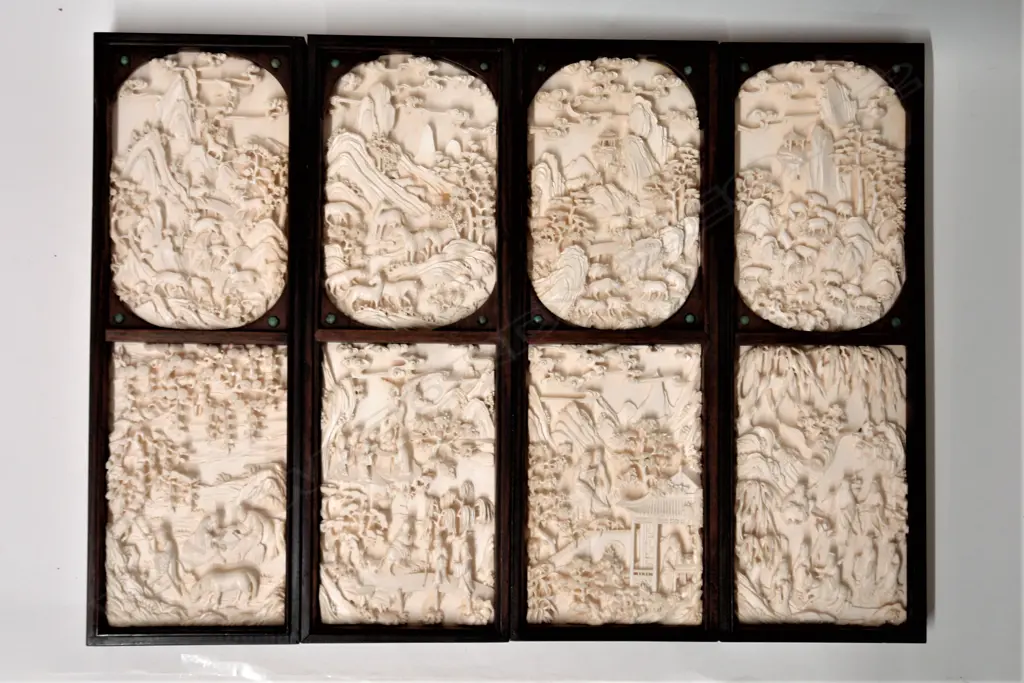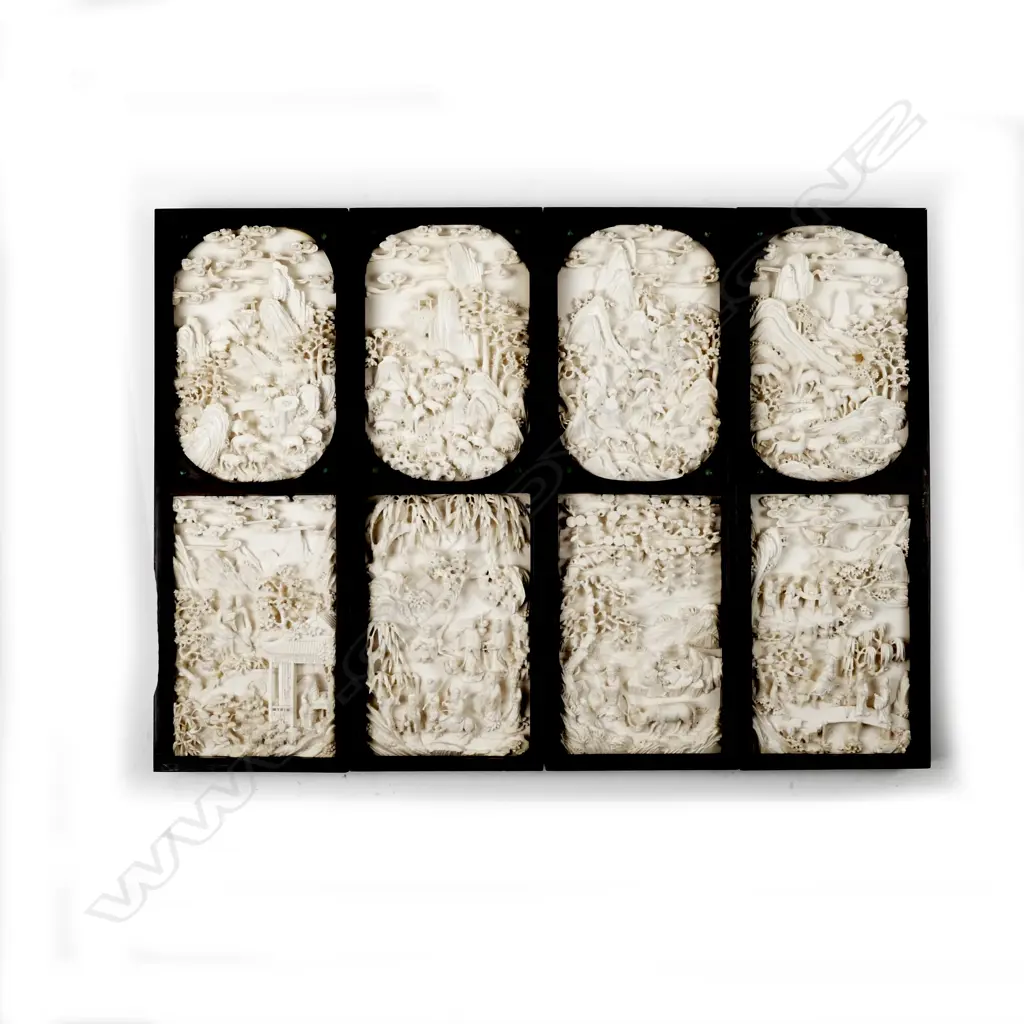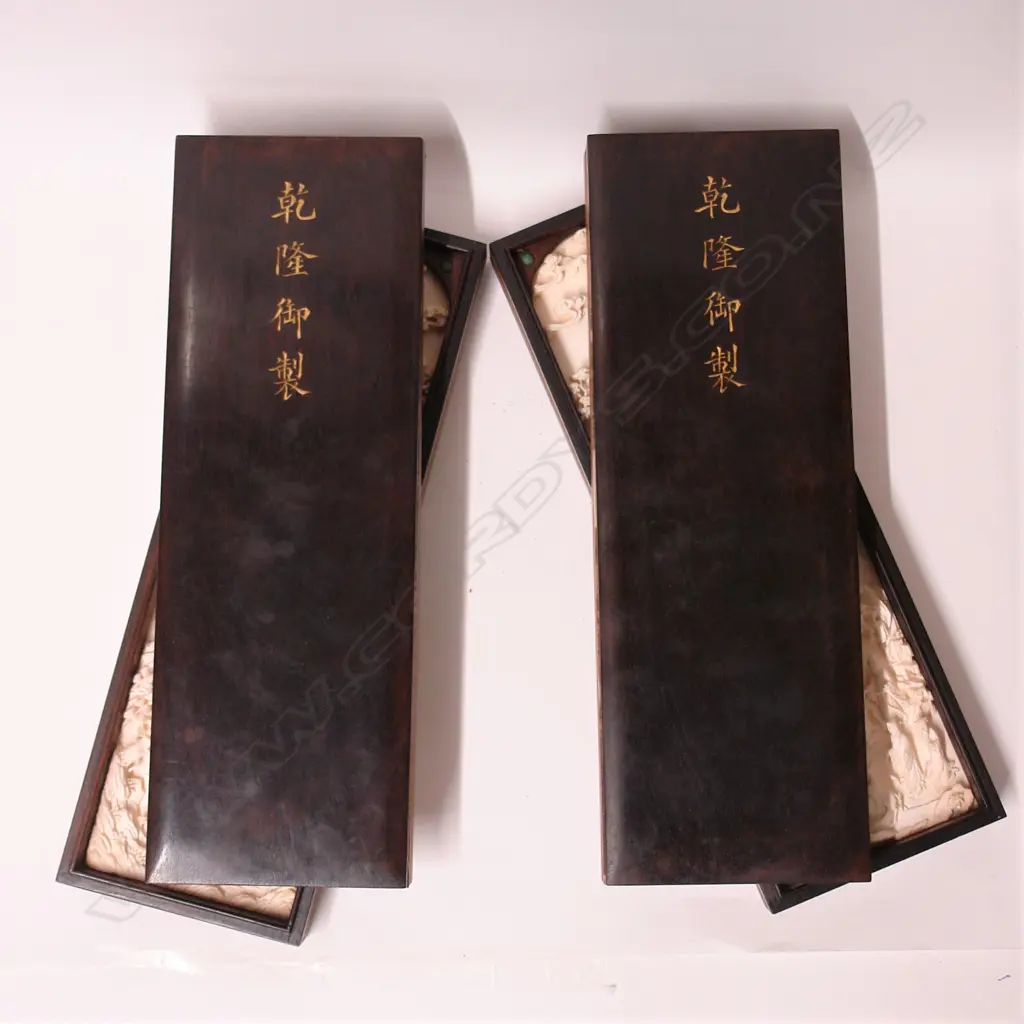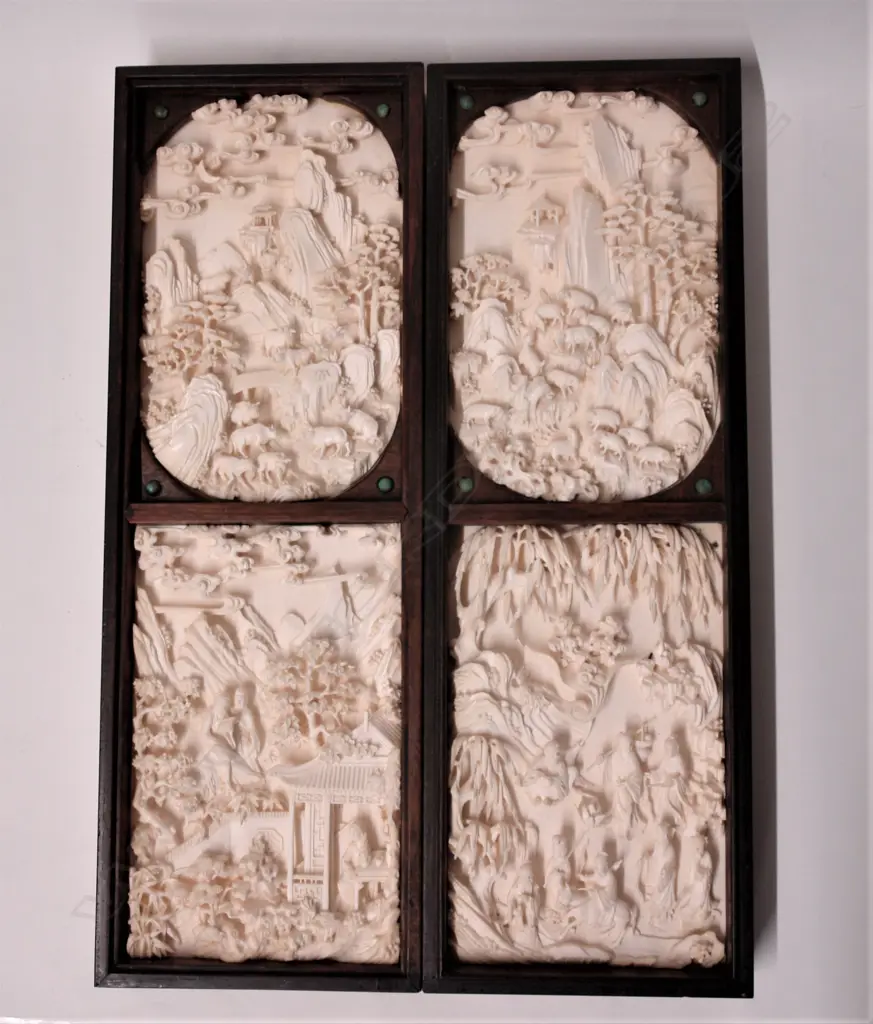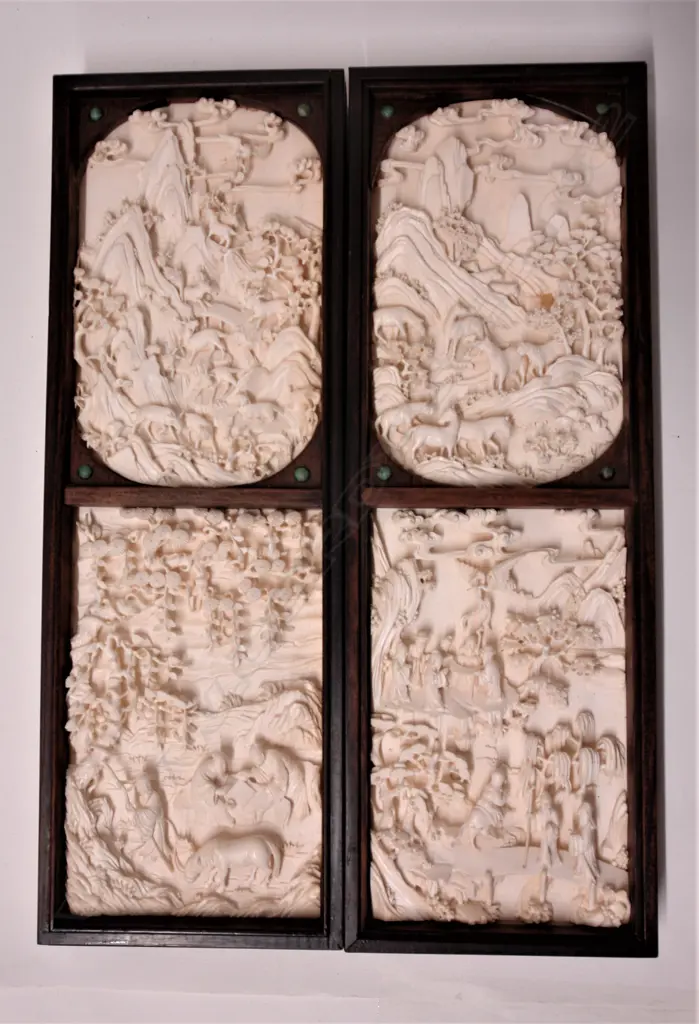SEPTEMBER JEWELLERY ANTIQUE & ART AUCTION 10AM Tuesday, 11 September 2018 / 10:00 am start
An extremely rare set of eight Chinese ivory panels
Realised: $21,500 plus premium
Lot Details
each exquisitely and deeply carved in high relief with mountain scenes (probably taken from scenes in history or mythology). The ivory panels mounted with turquoise pins as pairs in interlocking hardwood box frames, two fashioned as bases the other two as lids. The frames probably of zitan wood, which was reputedly restricted to the use of the Emperors for much of the 18th and 19th centuries. Together with bronze and glazed display stands, removed for display, which are believed to have been made to order prior to Stanton's exodus from China in 1923 (See later notes on Stanton). Each rectangular ivory panel 150 x 100mm, the oval panels 155 x 100mm. Each frame 335 x 115mm. Provenance: The estate of E. A. Stanton. Stanton is recorded as working in Canton (Guangzhou), a partner in the Chinese trading house Deacon and Co, as early as 1908, where the publication 'Twentieth Century Impressions of Hong Kong, Shanghai and Other Treaty Ports of China' noted he conducted the business with a staff of European and Chinese assistants. Curiously, he is recorded with his initials E A, (not his first names) even on a silver punch bowl (sold at an earlier date) celebrating his marriage on April 3rd, 1909. For some period, he was vice consul for Norway in Canton. In 1923 the family relocated to England, subsequently emigrating to New Zealand at a later date. The family took with them the collection of Chinese artifacts gathered during their time in China. On 21st October 2015 the collection of over 50 items, were offered by one of Stanton's descendants at Dunbar Sloane's Auckland auction. Chinese newspapers, used as protective packing for transport to England, confirm the date of departure, for they are dated 11th year of the Republic (1923). Some of these newspapers, now very fragile, remain in situ. Evidence of their earlier existence was also noted by Dunbar Sloane in an insurance valuation dated 1974. In private discussions with the current owner, Dunbar Sloane confirmed that the then current elderly lady owner had been adamant the family tradition was that these ivories had come from the Summer Palace (Yuanming Yuan), destroyed in 1860. Further support for a date of manufacture prior to 1860 however, is to be found on the backs of the upper two boxes, where the very rare Imperial Qianlong Yuzhi mark is painted in gold four character kaishu script. The mark translates as 'Made by Imperial order of the Qianlong Emperor' who reigned from 1736 to 1795, before abdicating in favour of his son, Jiaqing. The Qianlong Emperor is known to have had a great love of the arts, regularly inscribing the best pieces with personalized inscriptions and poetry.

